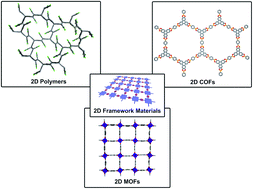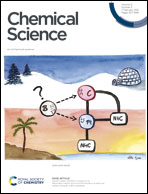2D framework materials for energy applications
Abstract
In recent years a massive increase in publications on conventional 2D materials (graphene, h-BN, MoS2) is documented, accompanied by the transfer of the 2D concept to porous (crystalline) materials, such as ordered 2D layered polymers, covalent-organic frameworks, and metal–organic frameworks. Over the years, the 3D frameworks have gained a lot of attention for use in applications, ranging from electronic devices to catalysis, and from information to separation technologies, mostly due to the modular construction concept and exceptionally high porosity. A key challenge lies in the implementation of these materials into devices arising from the deliberate manipulation of properties upon delamination of their layered counterparts, including an increase in surface area, higher diffusivity, better access to surface sites and a change in the band structure. Within this minireview, we would like to highlight recent achievements in the synthesis of 2D framework materials and their advantages for certain applications, and give some future perspectives.

- This article is part of the themed collections: Metal organic frameworks and porous polymers and Most popular 2021 catalysis articles, 2021


 Please wait while we load your content...
Please wait while we load your content...